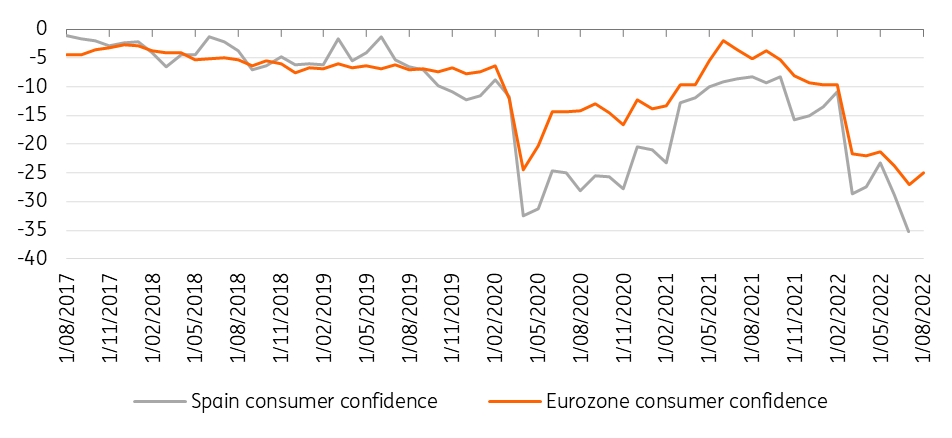Spanish inflation slightly down in August
Spanish inflation fell to 10.4% year-on-year in August from 10.8% in July, driven by a drop in fuel prices. But core inflation is still rising, suggesting that a downward inflation trend will be at best very gradual
Spanish inflation dropped to 10.4% year-on-year thanks to a drop in fuel prices
Spanish inflation decreased to 10.4% year-on-year in August from 10.8% in July, according to data released this morning by the National Institute of Statistics. The drop is mainly driven by a decrease in fuel prices. Core inflation, excluding the more volatile food and energy prices, however, rose to 6.4% year-on-year in August from 6.1% last month. On a monthly basis, prices rose by 0.1% in August, compared with a -0.3% decline in July. Although the component breakdown is not available yet, the statistical office confirmed that electricity and food prices have continued their upward trend.
Despite the gas price cap, electricity prices continue to go up
From mid-June, Spain and Portugal set a price cap on gas for power production. Through this measure, the two Iberian countries aim to bring the total energy bill down by decoupling the price of gas and electricity. Although the measure moderated price increases, it didn’t succeed in bringing them down. The gas price cap has also had the undesired effect of reducing the attractiveness of other energy sources, leading to an increased dependence on gas. According to network operator Enagas SA, gas demand was 126% higher in July compared with the same month last year. On top of that, electricity prices have been further impacted by the drought and heat waves in the country. Hydropower plants ran last week at only 37% of their total capacity due to the low water levels.
High inflation is likely to push the economy into recession this winter
In the second quarter, GDP grew by 1.1% thanks to strong consumption and a great recovery in tourism activity. However, we expect growth to grind to a halt in the third quarter and to slip into recession from the fourth quarter onwards. The rise in energy costs might fuel another round of price increases deepening the cost of living crisis. For 2022 as a whole, we increase our inflation forecast to 9.0%. As we expect energy prices to stay elevated for a while, inflation will likely remain in double digits over the autumn before slowly coming down. This might lead to a severe contraction in household consumption after the summer. In July, Spanish consumer confidence fell below the Covid-19 pandemic low showing that consumers are increasingly worried about high inflation. In addition, with the rest of Europe also likely to fall into recession, the contribution of tourism to growth might fade again.
Consumer confidence in Spain is falling more rapidly than the eurozone average
